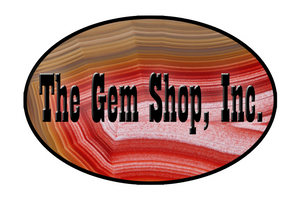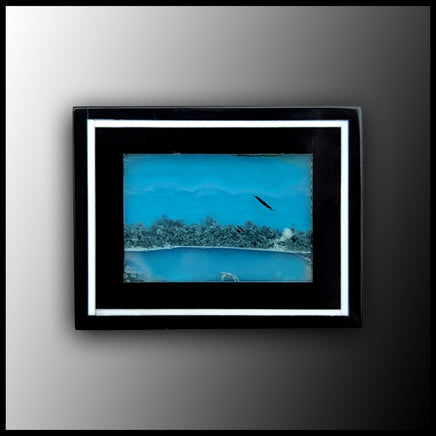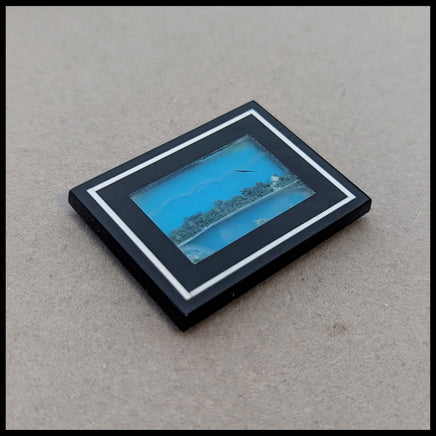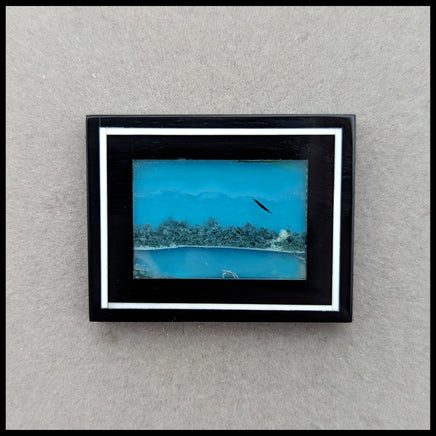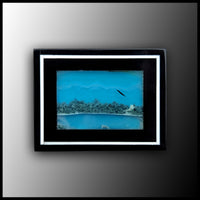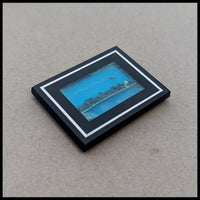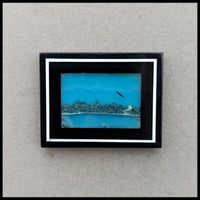This polished intarsia contains layers of stone, with the center containing Montana Moss Agate, Santa Maria Plume Agate, one layer with two pieces of Turquoise; and completed with a triple border frame and black backing. The cabochon is constructed from 17 individual pieces.
The furthest visible layer in the center contains two different shades of turquoise, with the split occurring beneath the mossy line created from the Santa Maria Plume Agate. The plume agate layer also has faint translucent bands that overlay the blue backing, which create gentle clouds in the sky. Over this little beach or lake scene lies an exceptionally clear layer of Montana Moss Agate. This layer creates tiny black birds along the tree line, and a large bird soaring overhead.
Montana Moss Agate
Santa Maria Plume Agate
Turquoise split layer
Black Basalt
Border:
Black Onyx
White Agate
Black Onyx
40mm x 13mm
Intarsia: The Gem Shop’s founder, Eugene Mueller, has an MFA in painting and has won awards in the Cutting Edge Competition® for his intarsia, and has crafted and/or designed many of the pieces available here. For thousands of years artisans have been using stone, striving to create the most beautiful scene possible. This process is commonly referred to as Intarsia. Intarsia traces its history back to the Italian Renaissance, and was called pietra dura or pietre dure. This is a term for the inlay technique of using thinly cut and polished stones to create images. The stonework is glued stone-by-stone to a substrate after having previously been sliced and cut in different shape sections; and then assembled together so precisely that the contact between each section is practically invisible. Intarsia items are generally crafted on green, white or black base stones. Traditionally Intarsia pieces have a flat polish, but more contemporary pieces are more freeform and have a dome polish, and are often referred to as “composite cabochons.” Intarsia is a high expression of lapidary art requiring a close mastery. Each piece is eccentric and highly collectible – a true work of art.
